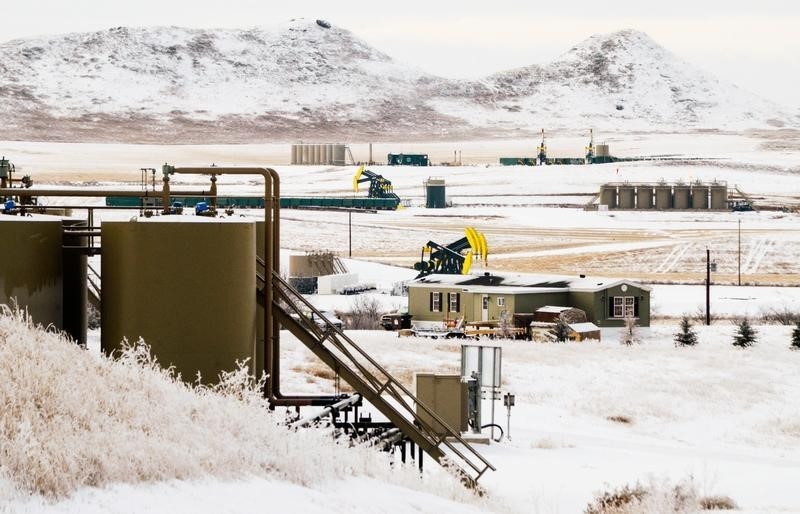By Barani Krishnan
NEW YORK (Reuters) - Oil prices tumbled on Monday on expectations that U.S. crude inventories would again build to record highs, taking the market's focus off swooning Canadian oil output due to raging wildfires.
Brent settled almost 4 percent lower, with U.S. crude down almost 3 percent. In early trading, oil rallied more than 2 percent as investors considered the loss of half, or more than 1 million barrels per day (bpd), of Canadian oilsands supply. Canada exports almost all its crude from oilsands to the United States.
But analysts noted that speculators already hold the largest number of long positions since last summer in U.S. crude's West Texas Intermediate futures (CLc1) and near-record bullish bets on Brent (LCOc1), and said the scope for further gains was limited.
"Positioning has been already very stretched in the oil market," Barclays (LON:BARC) Capital commodities strategist Miswin Mahesh said.
WTI's front-month contract, June (CLc1), settled down $1.22, or 2.8 percent, at $43.44 (30 pounds) a barrel. It had rallied as much as $1.28 in Asia.
Brent's front-month, July (LCOc1), tumbled by $1.74, or 3.8 percent, to settle at $43.63. It had risen as high as $46.48.
July WTI
Some analysts said the Canadian outages could still support prices as officials said resuming operations would be a challenge, with no timeline set.
On Monday, investors were focussed on market intelligence firm Genscape's report of an inventory build of 1.4 million barrels at the Cushing, Oklahoma delivery hub for WTI futures.
Separately, they expected total U.S. crude inventories to have built again last week for a fifth straight week, rising by 500,000 barrels to new record highs above 543 million barrels.
Investors were also wary of Saudi Arabia's appointment of a new Energy Minister, Khalid al-Falih, who was expected to strengthen the kingdom's focus on oil market share over price defence.
Until last month, oil had seen one of the strongest rebounds since the financial crisis, with prices rallying nearly 80 percent from multi-year lows under $30 in the first quarter, supported by falling U.S. production, supply constraints in Libya and the Americas and a weak dollar.

The rally has since faded as record pumping of oil by Russia and major Middle East producers renewed worries about a global glut of some 1.5 million bpd that originally drove prices down from above $100 in mid 2014.